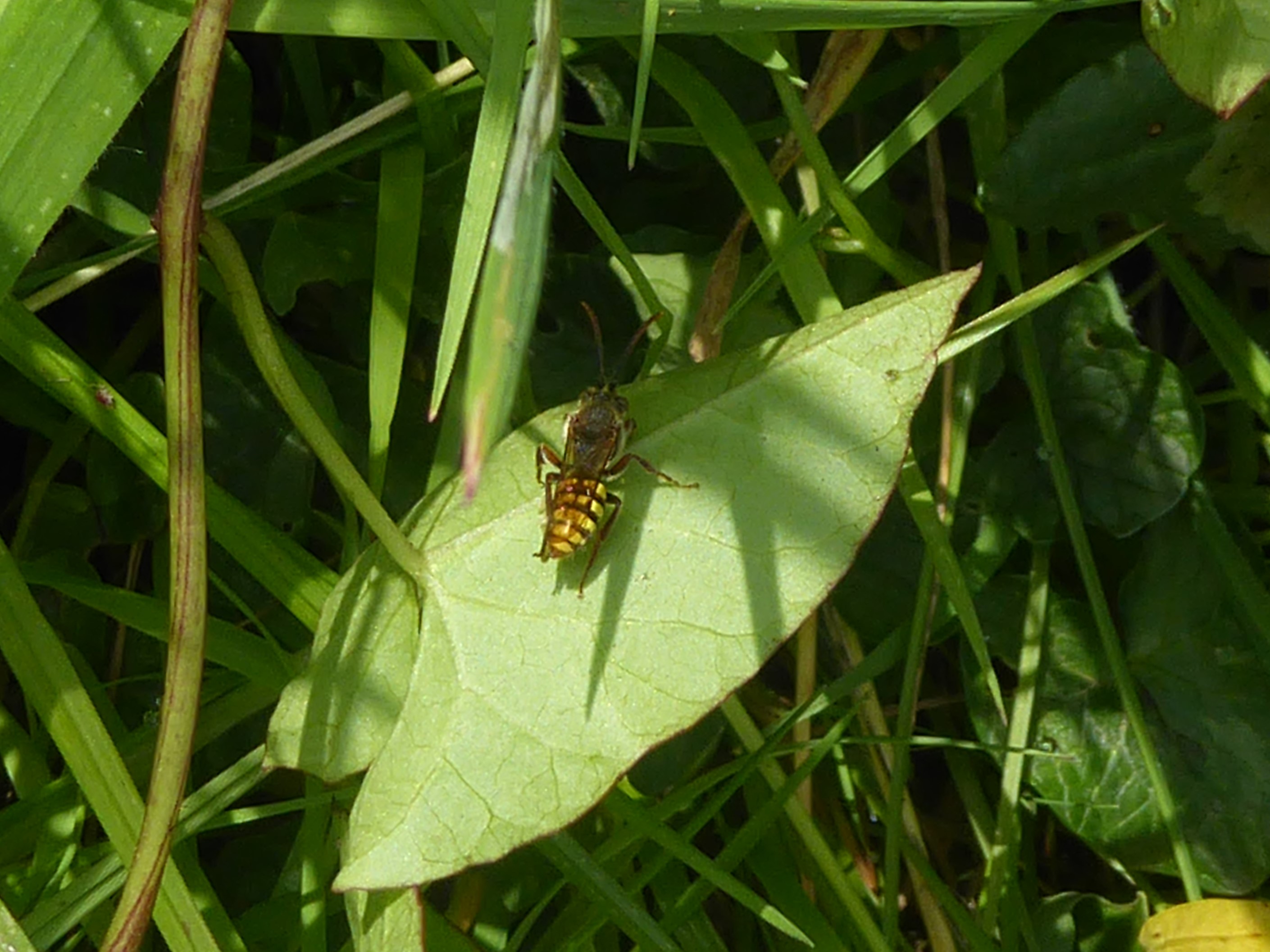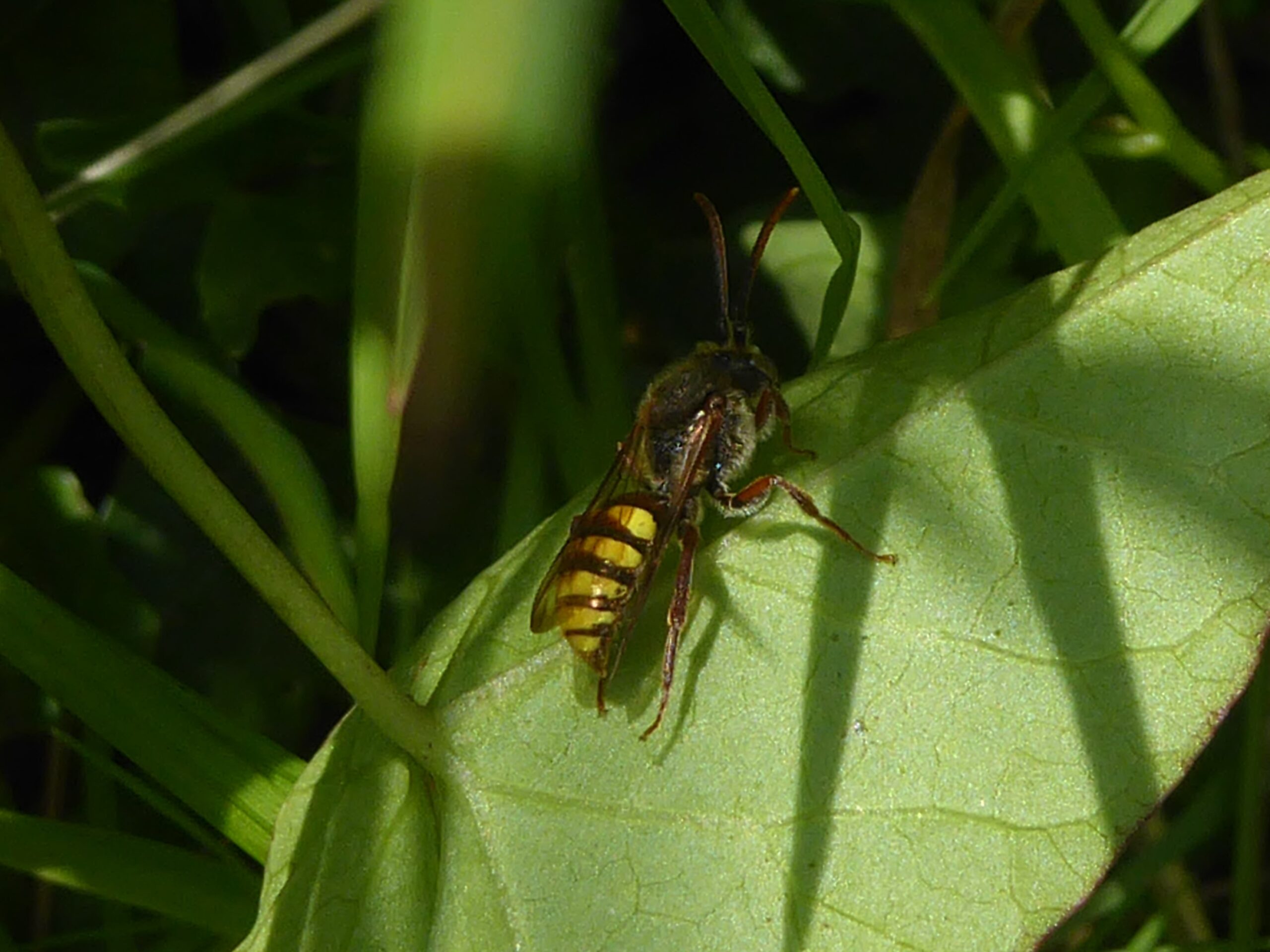Yesterday, I spotted the bumblebee plumehorn, which I thought was an actual bee, but I also noticed a ‘funny wasp’. I could see it didn’t look quite right, but I wasn’t sure why. For a start, the stripes had no dots, but were regular (apart from the first two being split with a black line, which defines it as the Marsham’s Nomad Bee). The legs were brownish, not yellow, and the thick antennae red-brown, rather than black. And although the abdomen looked the right shape, the waist was too long and the wings covered the abdomen, rather than lying down each side. Interestingly, this is not a hoverfly, but a bee. Nomad bees are, nevertheless, parasites, and also known as cuckoo bees. This bee can be seen from April to June and lays its eggs in the nests of mining bees.

One final point to note is that although it looks menacing and waspish, it doesn’t sting humans. In fact, I was pleased to learn that no solitary bees sting humans, as they do not have a hive and stores of honey to defend and are therefore less aggressive.
